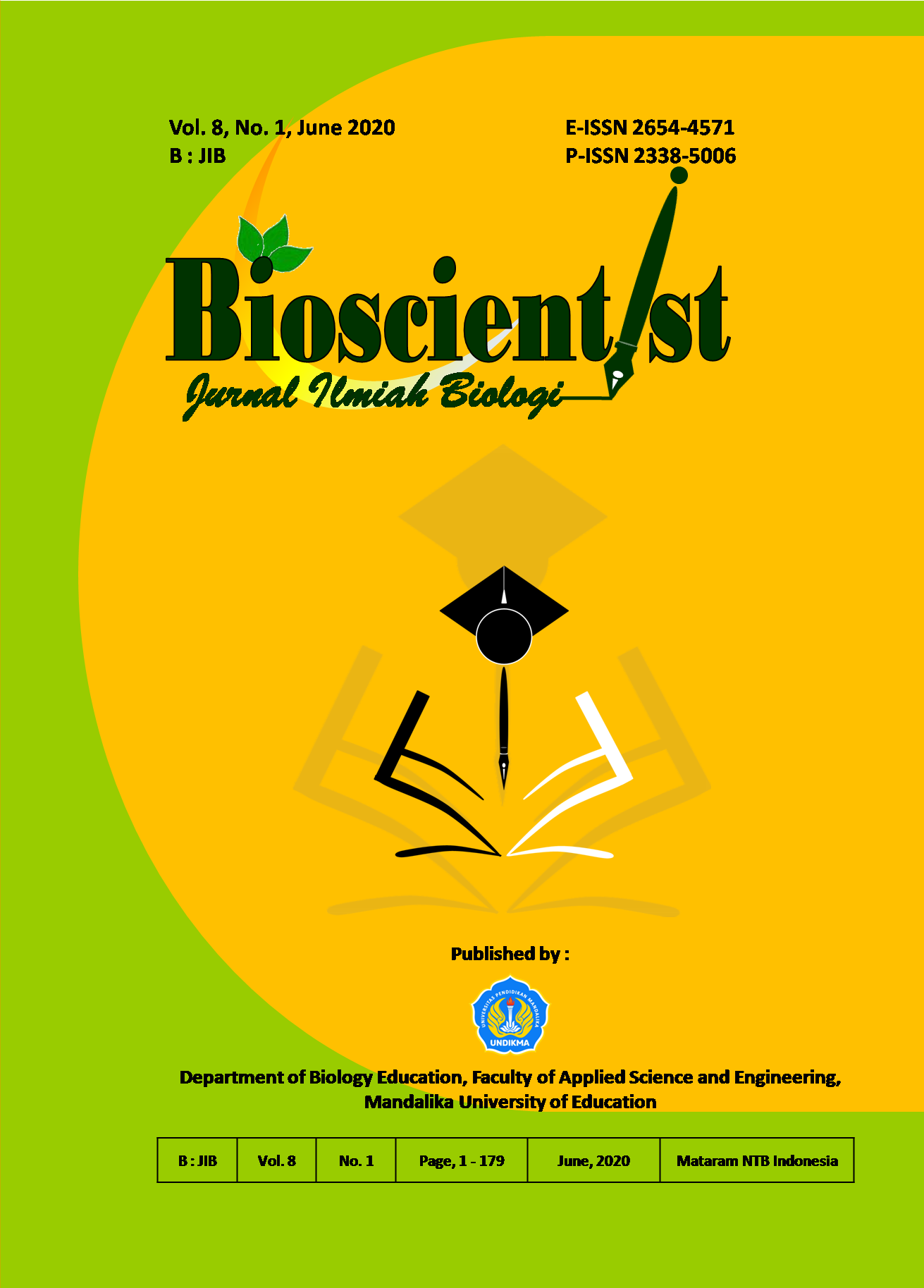STUDI ORGANOLEPTIK TEMPE DARI PERBANDINGAN KACANG KOMAK (Lablab purpureus (L.) Sweet) DENGAN BERBAGAI KONSENTRASI RAGI DAN LAMA FERMENTASI SEBAGAI BAHAN PENYUSUNAN BROSUR
DOI:
https://doi.org/10.33394/bioscientist.v8i1.2662Keywords:
Organoleptic Test, Tempeh, Hyacinth Bean (Lablab purpureus (L.) Sweet), Brochure.Abstract
Tempeh is popular with Indonesian people, besides its price is relatively cheap and tastes good, tempeh also has high vegetable protein content. The objectives of this study are: 1) to find out the organoleptic comparison of the Hyacinth Bean (Lablab purpureus (L.) Sweet) tempeh at various concentrations of yeast; 2) knowing the organoleptic comparison of tempeh Hyacinth Bean (Lablab purpureus (L.) Sweet) on various fermentation periods; and 3) implementing research results as material for preparing brochures for the community. This type of research is pure experimental research. Using Random Group Design (RBD). The yeast concentration consisted of 1.5%, 2%, and 2.5% treatments, while the fermentation time was 24 hours, 30 hours and 36 hours. Organoleptic parameters include color, taste, texture, and aroma. Data collection techniques used in this study were carried out by observation, questionnaires, organoleptic test observations, and brochure validation sheets. Data analysis techniques used Analysis of Variance (ANOVA) with a significance level of 5%. The results showed that, variations in yeast concentration and length of fermentation in making tempeh Hyacinth Bean (Lablab purpureus (L.) Sweet) significantly influenced the aroma, taste, and texture, while the concentration of yeast and duration of fermentation did not significantly influence the tempe color of Hyacinth Bean (Lablab purpureus (L.) Sweet). The results of the brochure assessment qualification analysis show that, the brochure is suitable for use by the public.References
Dwinaningsih, E. A. (2010). Karakteristik dan Sensori Tempe dengan Variasi Bahan Baku Kedelai/Beras dan Penambahan Angka serta Variasi Lama Fermentasi. SP Skripsi. Universitas Sebelas Maret.
Dewi, I. W. R. (2010). Karakteristik Sensoris, Nilai Gizi dan Aktivitas Antioksidan Tempe Kacang Gude (Cajanus cajan) dan Tempe Kacang Tunggak (Vigna unguiculata) dengan Berbagai Variasi Waktu Fermentasi. MSi Thesis. Universitas Sebelas Maret.
Harjanto, T. (2010). Respon Pertumbuhan Kacang Komaq terhadap Cekaman Kekeringan. Jurnal Agrika, 4(2), 140-147.
Hoesin, H. (2017). Mutu Produk “Pengujian Indrawi atau Organoleptikâ€. Retrieved Januari 28, 2019, from https://lizenhs.wordpress.com/2017/07/27/mutu-produk-pengujian inderawi-atau-organoleptik/.
Jayanti, E. T. (2017). Uji Kandungan Kasar Biji Kacang Komak (Lablab purpureus (L.) Sweet) Lokal Pulau Lombok. Bioscientist : Jurnal Ilmiah Biologi, 5(2), 82-86.
Laurita, A. C. (2018). Pengaruh Jenis Bahan Baku dan Metode Pemasakan yang Digunakan pada Pembuatan Tempe terhadap Rasa dan Sifat Fisik Tempe. SP Skripsi. Universitas Muhammadiyah Purwokerto.
Mukhoyaroh, H. (2015). Pengaruh Jenis Kedelai, Waktu, dan Suhu Pemeraman terhadap Kandungan Protein Tempe Kedelai. Jurnal Florea, 2(2), 47-51.
Suprihatin. (2010). Teknologi Perpindahan Massa dalam Perancangan Proses Reaksi. Surabaya: Universitas Negeri Surabaya.
Suwardi, Ambarkahi, R.P.Y., Putri, A.A.G., & Putra, D. E. (2019). Pelatihan dan Pendampingan Agroinovasi Quick Tempeh “Tempe Cepat†pada UKM Pengolahan Tempe. Prosiding Seminar Nasional Hasil Pengabdian Masyarakat dan Penelitian Pranata Laboratorium Pendidikan (pp. 238-242). Jember, Indonesia: Politeknik Negeri Jember.
Putri, B. D., Widyastuti, S., & Werdiningsih, W. (2018). Tempe Kacang Komak dengan Beberapa Pembungkus yang Berbeda Selama Fermentasi. Pro Food : Jurnal Ilmu dan Teknologi Pangan, 4(2), 343-350.
Winanti, R., Bintari, S. H., & Mustikaningtyas, D. (2014). Studi Observasi Higienitas Produk Tempe Berdasarkan Perbedaan Metode Inokulasi. Life Science : Journal of Biology, 3(1), 39-46.













